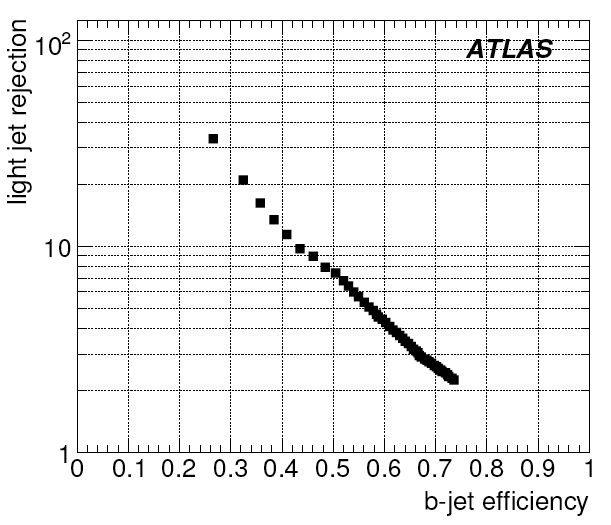...
Measurement of the jet energy resolution
...
b-tagging
general introduction...
Track-jet based b-tagging
...
The aim of this project is to develop techniques to identify the flavor of hadronic jets, in particular: quark/gluon separation, tagging b-jets from gluon splitting, and the identification of highly boosted (bb) jets.
gluon bb tagging
The SLAC group have proposed, for the ?rst time in an hadron collider experiment, a technique to identify b-tagged jets from gluon splitting, and distinguish them from single b-tagged jets. This is important because the main backgrounds containing b?jets to signals from new physics, as well as for single-top, and Higgs production, consist of the production of a W boson in association with b?quarks produced by gluon splitting.
Next-to-leading order calculations show that, at the LHC, the cross section for merged b?jets is a factor of two higher compared to the
case in which the two b?quarks are produced at larger angles and reconstructed as separate jets.
The method developed uses a Neural Network trained with tracking and calorimeter information based on the fact that merged (bb) jets are wider, and have larger calorimeter-cluster and track multiplicity than single b jets.
We plan to use this neural network to select control samples with different gluon splitting content to test data/Monte Carlo agreement, reject b-tag background events, and improve the estimation of b-tag backgrounds.
highly boosted (bb)-jets
Quark/gluon separation
...
| Section |
|---|
| Column |
|---|
| The IPChi2 tagger is based on the impact parameter distribution of mis-tags, which can be derived directly from data and does not require the use of Monte Carlo templates as in the likelihood ratio b-tagger.
For every region of interest selected by the level 1 trigger, the level 2 b-tagging algorithm uses tracks reconstructed by the level 2 trigger, to determine the probability that the RoI originates form the primary vertex. b-jets are identified by chi2 probability cut.
The performance is measured as rejection as a function of efficiency. For instance, for a b-tagging efficiency of 60%, the Level 2 b-tagging algorithm rejection is 4, which means that, on average, only one out of four light quark jets will pass the selection.
link to ATLAS page We are working in the design of different trigger chains (set of trigger signatures and operational points at Level 1, Level 2 and Event Filter) optimized for different physics analyses, in particular all hadronic top, and inclusive jet+MET and b+MET searches. In particular, we are investigating the performance of asymmetric double b-tagging, which consists of requiring one loose and one tight b-tag jets. We have seen that this type of selection improves the rejection (at a same efficiency) compared to the more standard symmetric tagging. link to ATLAS page b+MET combined triggerThe SLAC group has proposed a combined b-jet+MET trigger, to be used in physics signatures containing b-jets and missing ET. The missing ET requirement provides an additional handle to reduce the output rate, while maintaining high efficiency for signal events. We are currently studying the effect of this trigger signature in hadronic top quark final states, and b+MET super-symmetry events. link to ATLAS page |
| Column |
|---|
|   |
|

